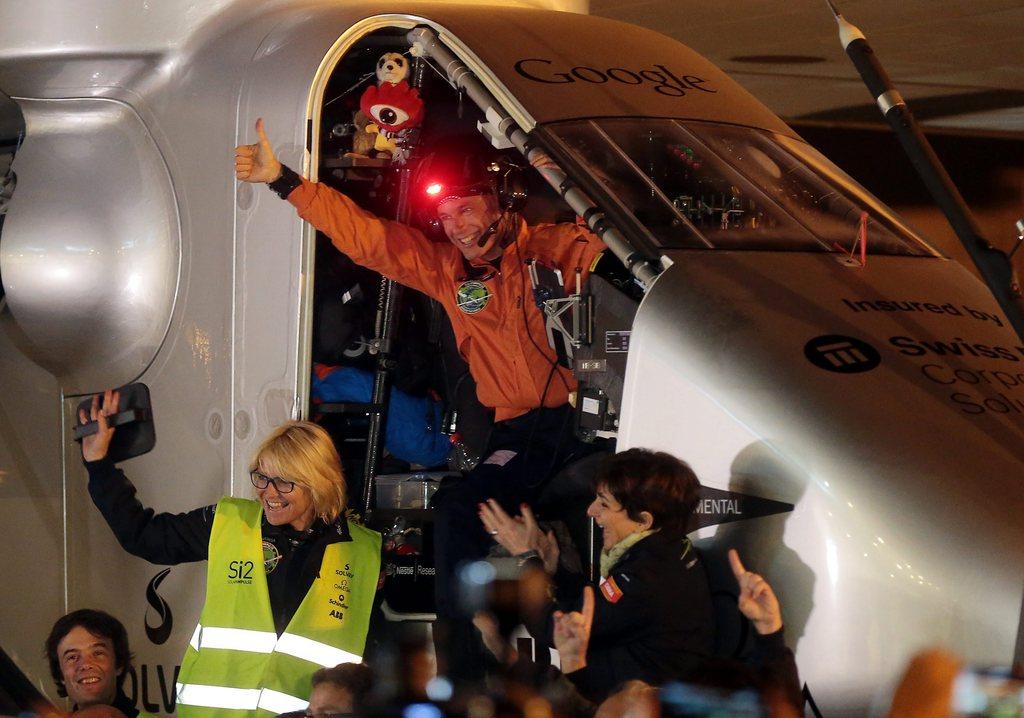Solar impulse pilots prepare for worst case scenario
The Solar Impulse is about to embark on its record-breaking attempt to cross the Pacific and stay airborne for five days using only solar power. (RTS/swissinfo.ch)
The plane flies from the eastern Chinese city of Nanjing in a 120-hour flight to Hawaii. It’s the longest leg of the round-the-world trip.
The team have waited several weeks for optimal weather conditions. They need as much sunlight as possible to adequately charge the plane’s solar cells in-flight.
The Solar Impulse project was launched to drum up support for clean energy initiatives, especially solar power. Its two stops in China – Chongqing and Nanjing – were aimed at raising awareness of solar projects in the world’s most populous country.
The trip began on March 9, 2015 in Abu Dhabi. During its mission, the sun-powered plane will fly for nearly 500 hours, travel 35,000 kilometres and cross two oceans and four continents.
The next leg of the journey is the most hazardous – pilot André Borschberg is flying solo and will only be taking occasional 20 minute naps.
He and Bertrand Piccard, the alternate pilot, trained for the worst case scenario: loss of control over the Pacific.


You can find an overview of ongoing debates with our journalists here. Please join us!
If you want to start a conversation about a topic raised in this article or want to report factual errors, email us at english@swissinfo.ch.